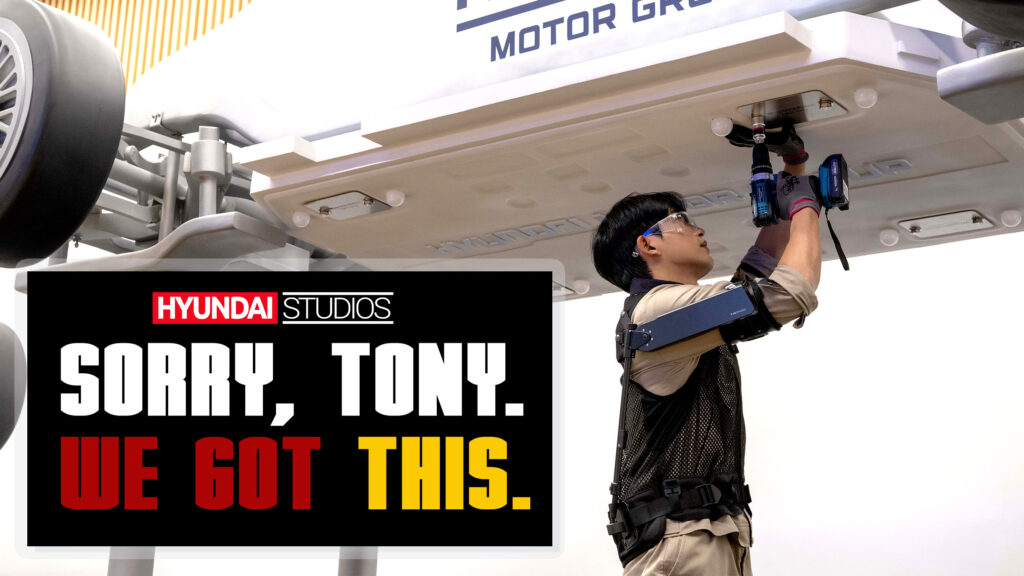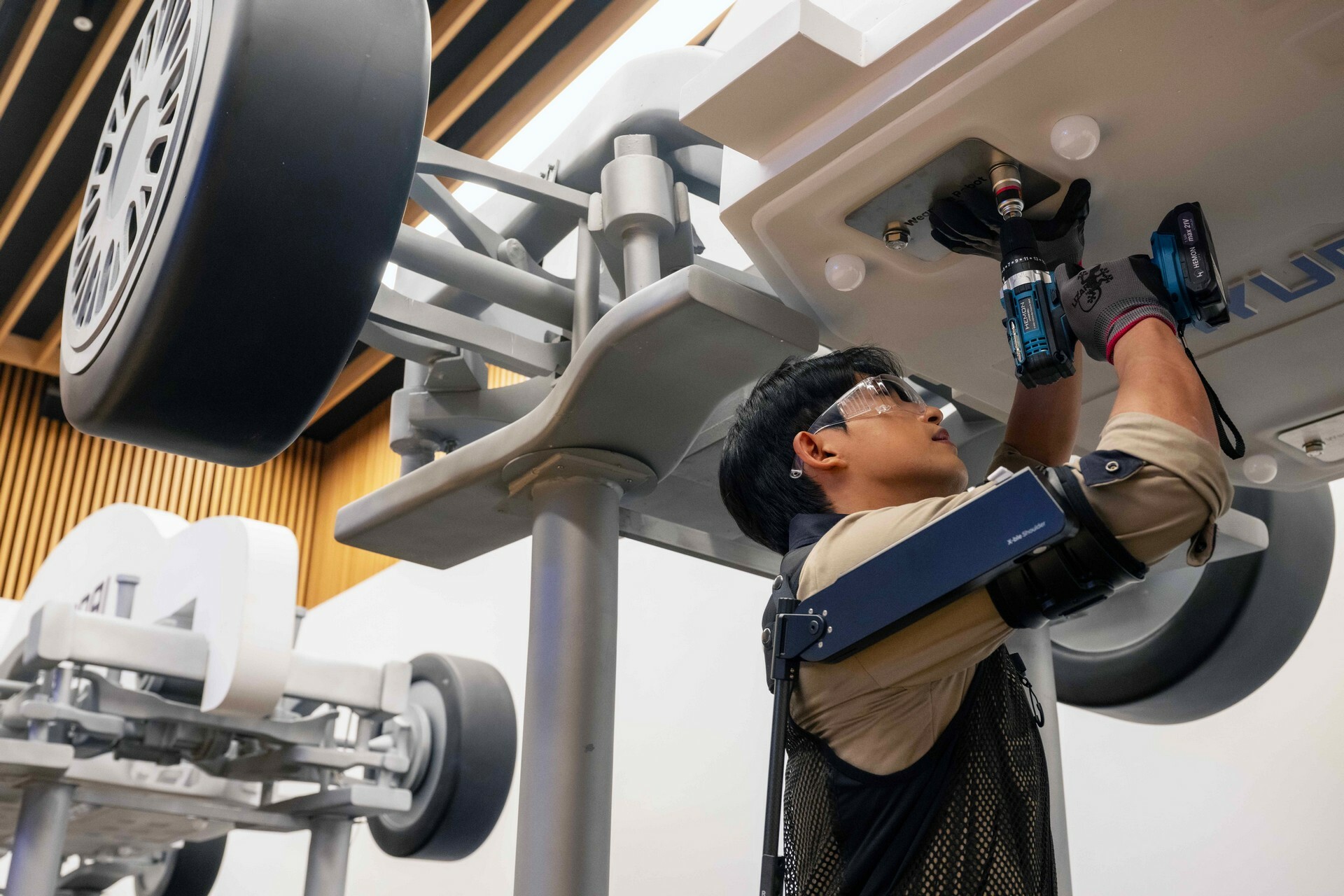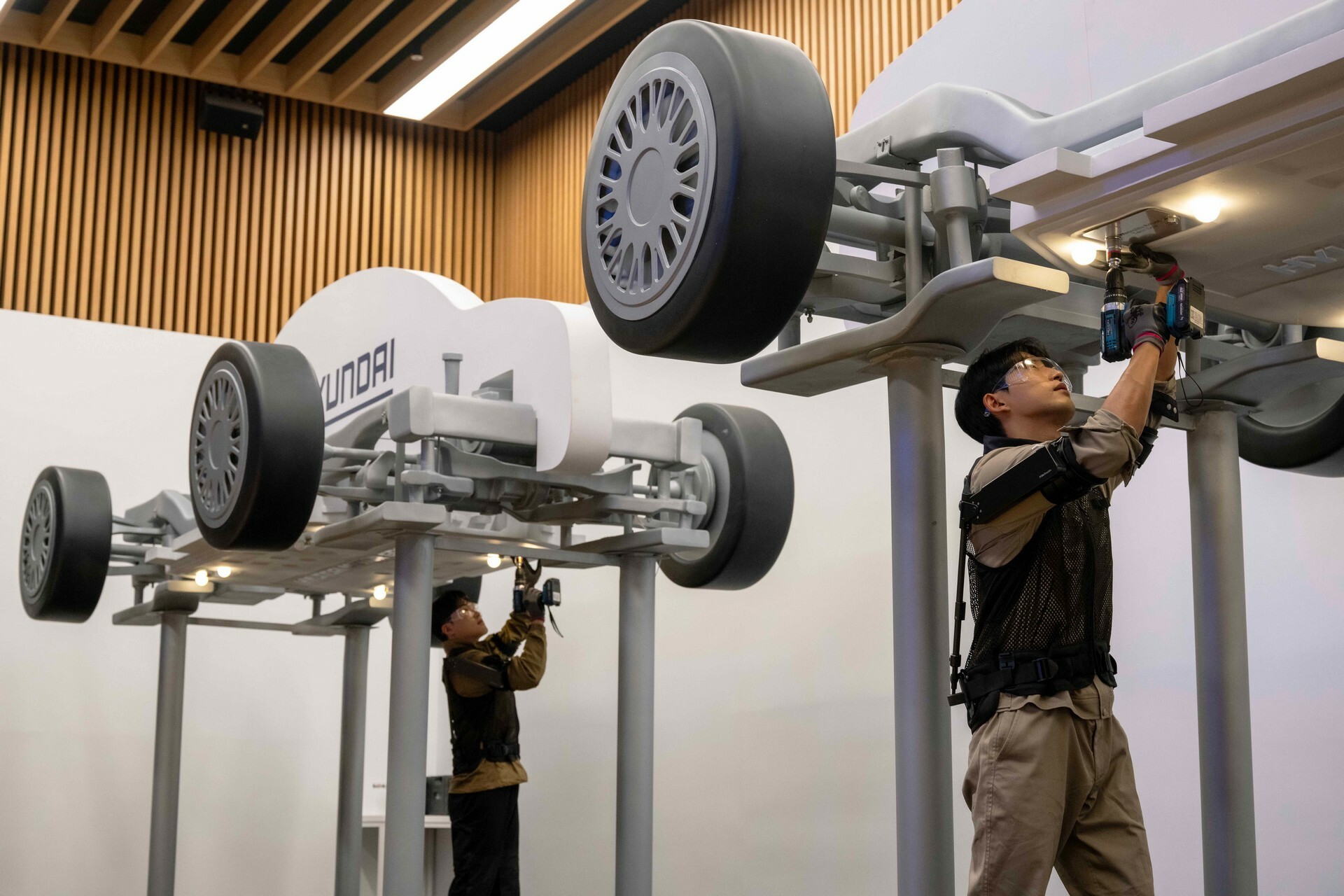- The X-ble Shoulder was developed by Hyundai and Kia’s Robotics LAB to assist workers.
- Each device is crafted from carbon composites and weighs just 1.9 kg (4.1 lbs).
- The wearable robotic device significantly reduces shoulder load and muscle activation.
As robotics continue to reshape industries, Hyundai and Kia are introducing a new wearable device designed to ease the physical strain of labor. This new robotic exoskeleton aims to reduce injuries among workers performing strenuous overhead tasks, making it especially beneficial for mechanics who spend much of their day bent under cars.
Developed by Hyundai and Kia’s Robotics LAB, the X-ble Shoulder isn’t just another gimmicky piece of tech. It’s designed to actively assist workers who have their arms raised for extended periods, reducing shoulder load by up to 60%. For the anatomy enthusiasts, it also reduces anterior and lateral deltoid muscle activation by up to 30%. In other words, it lightens the load both literally and figuratively.
Read: China’s Dongfeng Motors Deploys AI-Powered Humanoid Robot For Assembly Line
What’s really impressive here is the muscle compensation module that drives the X-ble Shoulder. This clever piece of tech can perform an astounding 700,000 folding and unfolding actions per year, so it’s built for endurance, not just a one-off task.
Obviously, no one’s going to want to work in a hulking exoskeleton all day, so Hyundai has ensured that this device won’t weigh you down. The X-ble Shoulder weighs in at just 1.9 kg (4.1 lbs), thanks to its carbon composite construction. It’s lightweight, adjustable, and designed to fit snugly without feeling like a straitjacket. It comes in two variants: the basic version offers up to 2.9 kgf of assistive force and is best for tasks where posture isn’t fixed, while the adjustable version delivers 3.7 kgf for those needing a bit more muscle.
While it’s easy to see how mechanics would benefit from the X-ble Shoulder, the device is far from limited to the automotive world. Hyundai says it will also suit industries including construction, shipbuilding, aviation, and agriculture.
A Market Poised for Growth
The wearable robot and exoskeleton market could be worth up to $10.25 billion by 2029, and the Robotics LAB from Hyundai and Kia is eager to capture a large slice of the market. Deliveries of the X-ble Shoulder will start in Korea in the first half of 2025 before it becomes available across global markets. There’s no word on how much it will cost.
And Hyundai’s not stopping at the shoulder. The Korean company is also working on an X-ble Waist to assist with lifting heavy loads and reduce back injuries, as well as an X-ble MEX, designed for the rehabilitation of the walking impaired. So, it looks like the future of wearable robots could be a lot more comprehensive than just helping you lift that engine block.














